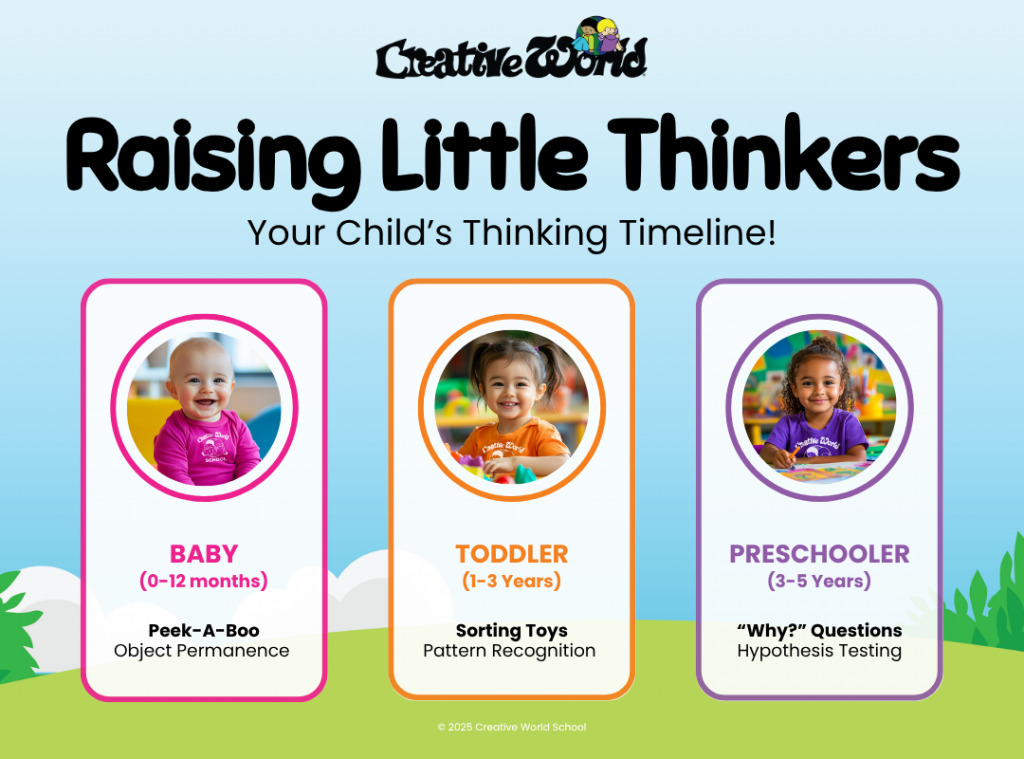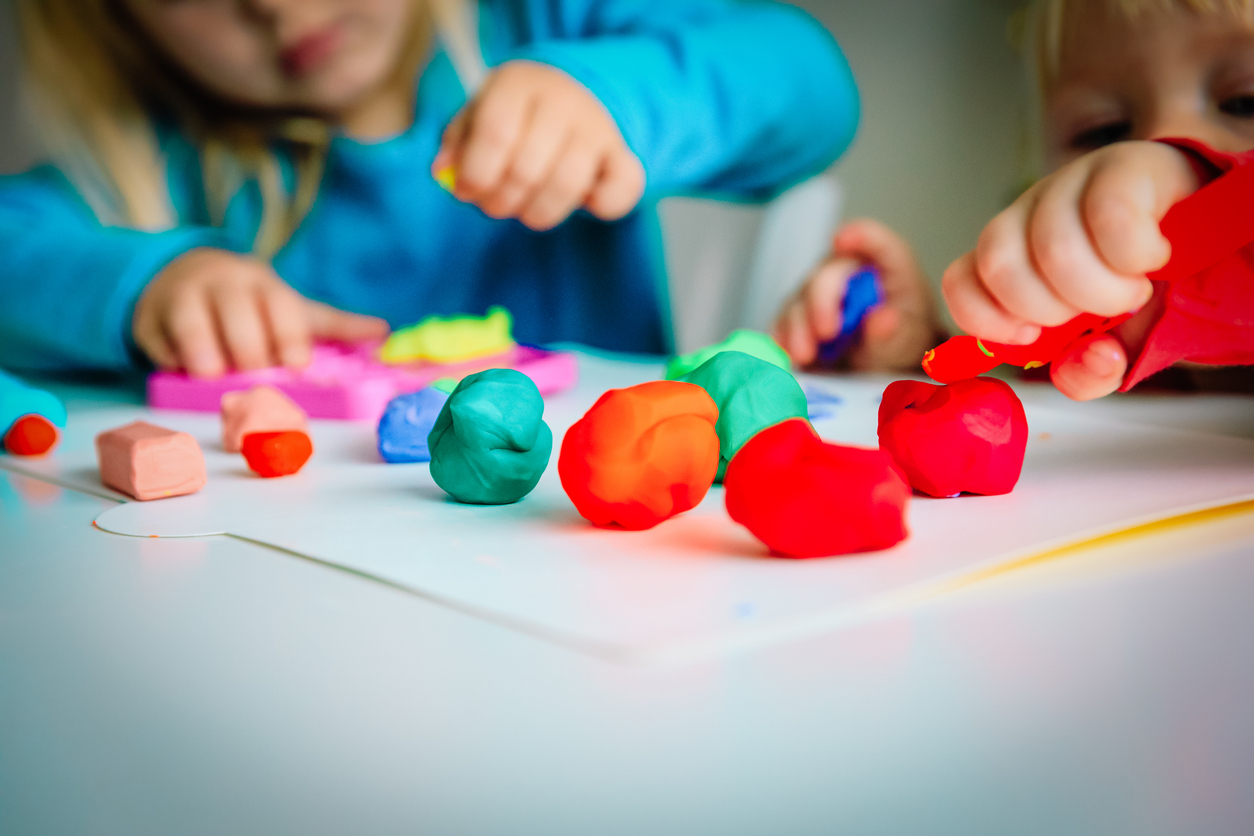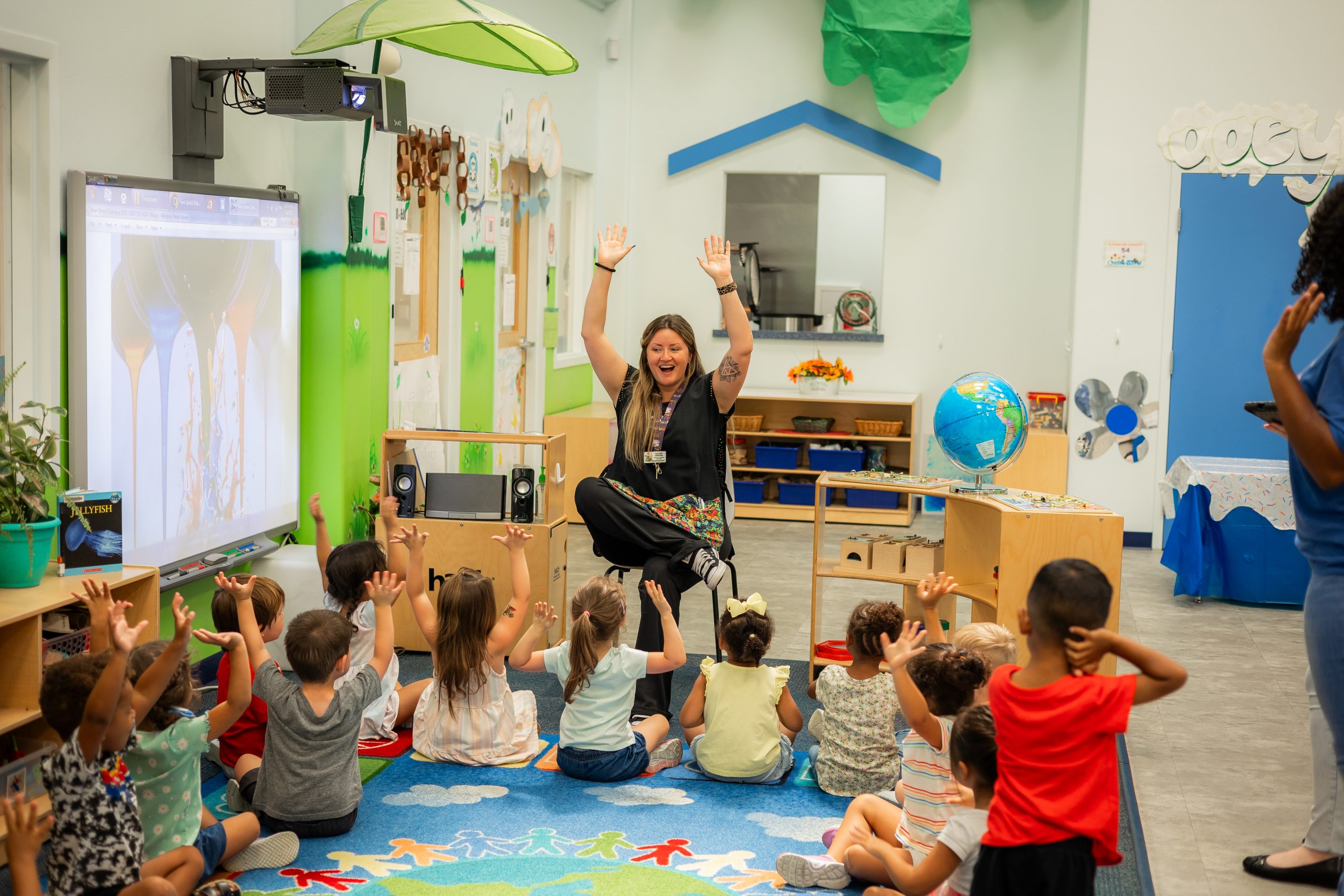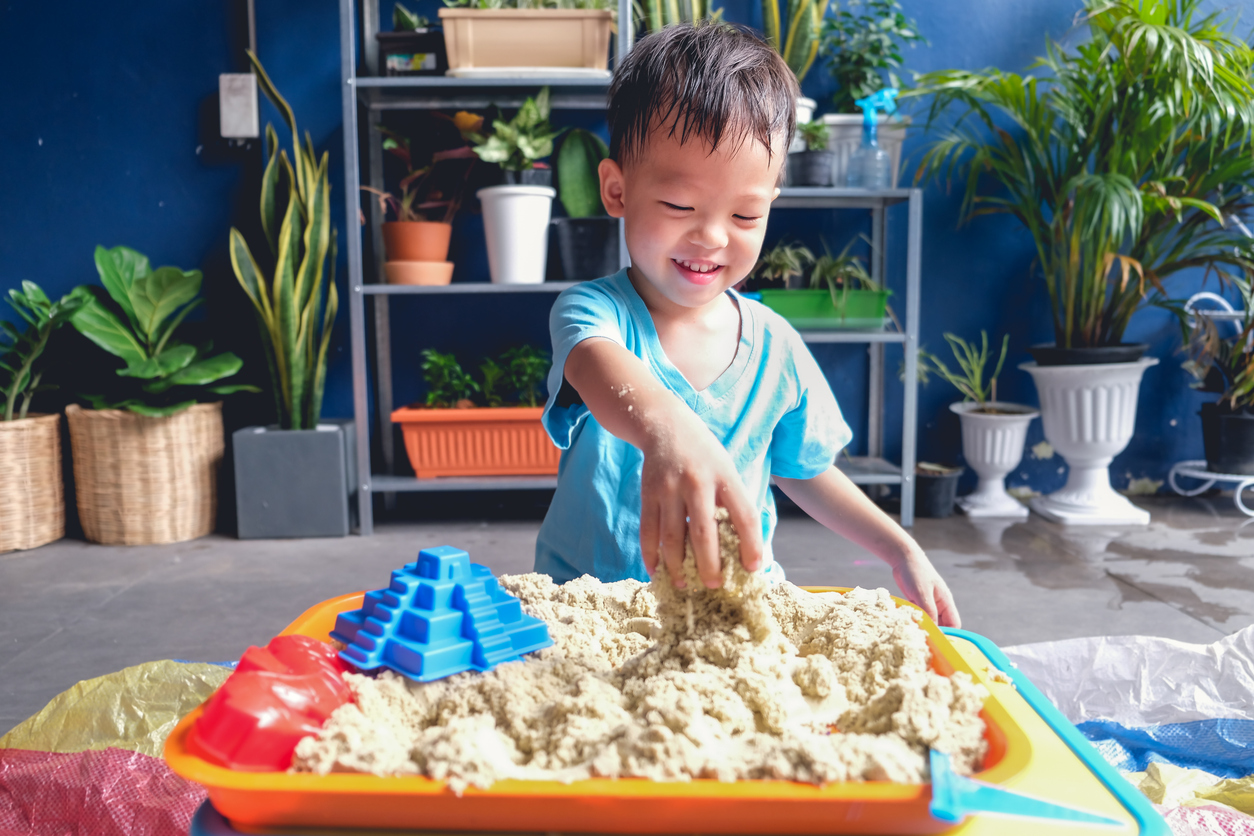
Nurturing Critical Thinking in Young Children: Unleashing Everyday Superpowers
Creative world school Jun 10, 2025Have you ever watched your preschooler try to build a tower taller than themselves? Every wobble is a new puzzle, and every collapse sparks a fresh plan to start over. These tiny moments stack up to big breakthroughs of critical thinking. We’ve created this researched-back guide to help you turn daily adventures into brain-boosting opportunities, all while having a blast!
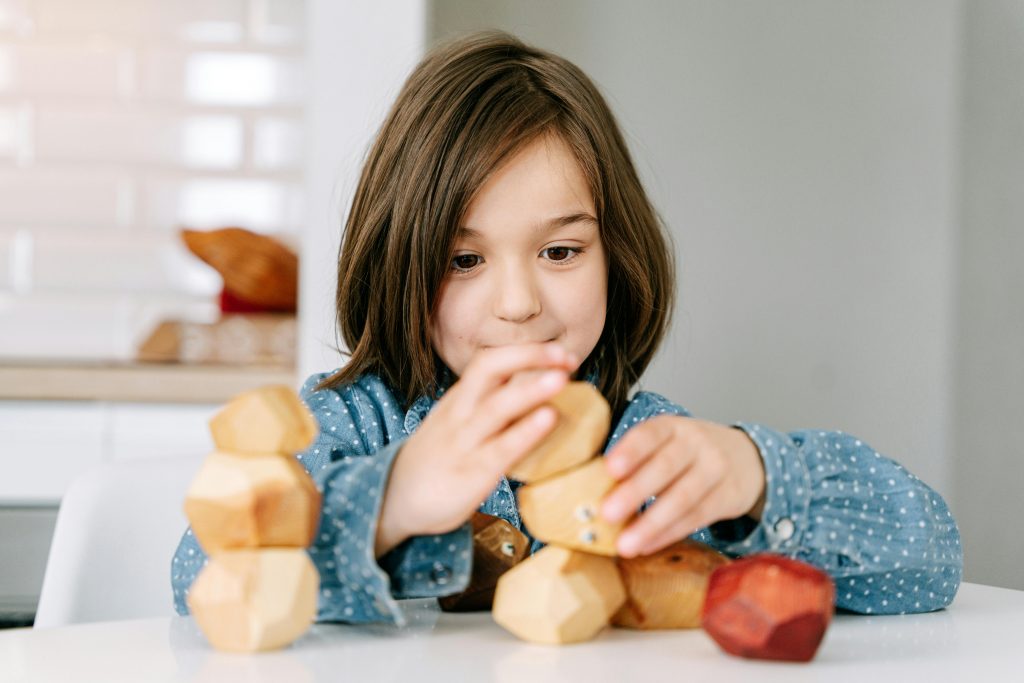
The Science Behind Little Thinkers
Did you know that 90% of adult brain volume develops by age five? Those early years are like a fireworks show of growth, with over 1 million new neural connections forming every second! This explosion of brainpower sets the stage for skills like problem-solving, curiosity, and creativity. Experts at the Harvard Center on the Developing Child explain how activities like pretend play and storytelling strengthen executive function. They’ve coined it as the brain’s “air traffic control” system. Want to see this in action? Try a game of “Simon Says” to practice focus, or turn snack time into a sorting challenge (“Can you group the raisins by size?”).
Check out Harvard’s Developing Child’s executive function guide for more insight and playful ways to turn chores like laundry sorting into skill-building games.
Why Critical Thinking Matters More Than Ever
Imagine your child facing a disagreement on the playground. Instead of tears, they suggest a fair way to share the swing. That’s critical thinking in action! Research from ScienceDirect shows that kids who practice sustained shared thinking—working through ideas with adults—develop stronger reasoning skills. It’s not just about school success; it’s about raising confident problem-solvers for life. Even preschoolers have a knack for “hidden” skills like algebraic thinking. They just need opportunities to flex those mental muscles!
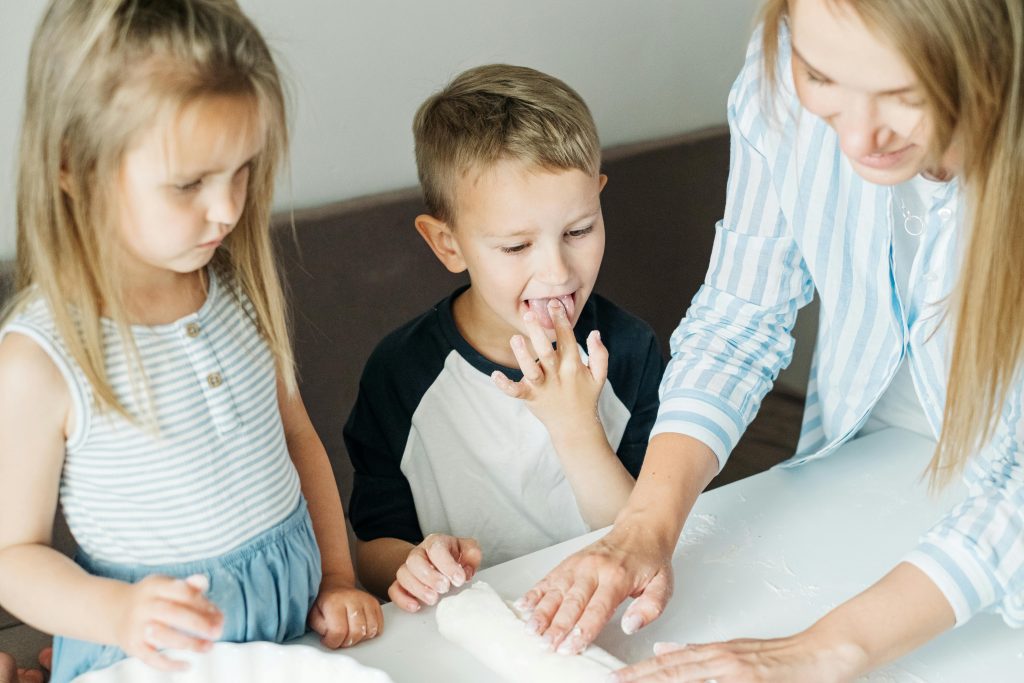
Turn Playtime Into Brain-Building Time
Who needs flashcards when you have cardboard boxes? A simple box can become a rocket ship, a castle, or a turtle shell. Don’t believe us? Pick up a copy of Not a Box by Antoinette Portis and jump down the rabbit hole of endless imagination.
Project-based learning, like building a living room fort, lets kids test ideas, make mistakes, and try again. The key is to promote and foster perseverance and determination without the pressure of achieving perfection, just like the determined heroine in The Most Magnificent Thing by Ashley Spires. For rainy days, the Harvard Center’s activity guide is full of fun ways to boost that executive function we mentioned earlier, like storytelling games that boost memory and stretches to practice deep breathing. Explore Project Zero’s Visible Thinking Routines for reflection games like “I used to think… Now I think…” during bedtime stories!
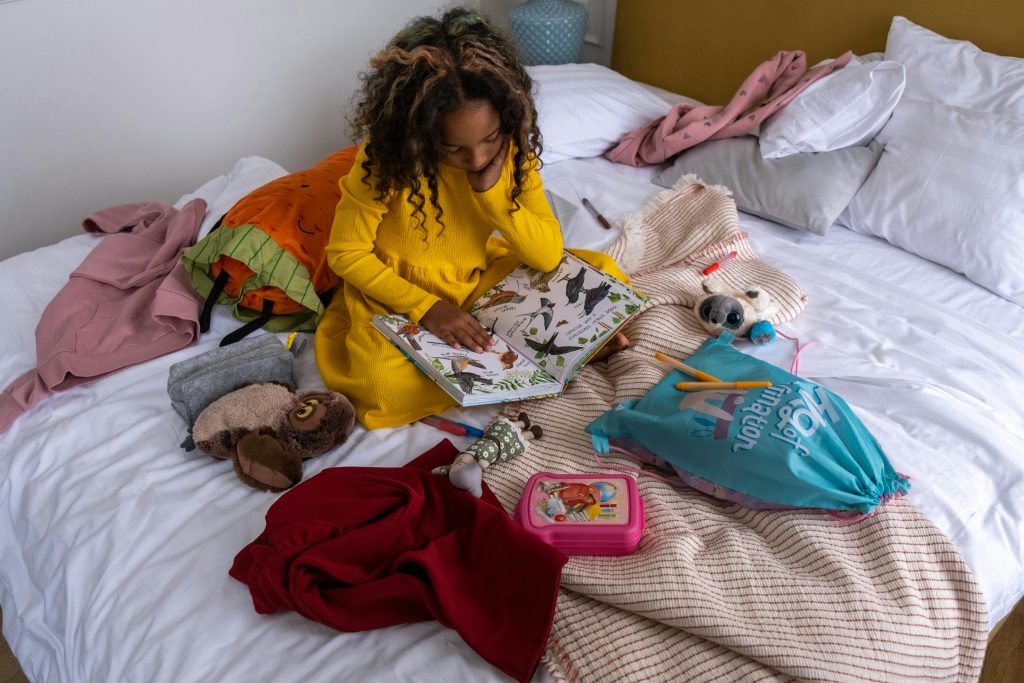
The Magic of “Why?” and “What If?”
Preschoolers ask hundreds of questions a day—that’s 40,000 “why/how/what if” queries by age five! Instead of rushing to answer, try stretching their thinking with prompts like, “How could we find out?” or “What would happen if…?” Watching clouds? Ask, “What shapes do you see? How do you think they move?” Baking together? Wonder aloud, “Why did the dough rise?” Check out Ada Twist, Scientist by Andrea Beaty for a rhyme-filled adventure about the joy of questioning!
Children’s books are secret weapons for teaching critical thinking. When reading What Do You Do With a Problem? by Kobi Yamada, chat about how the hero faces challenges (“What would YOU do if your tower kept falling?”). Real-life scenarios work too: A study in ERIC found that kids who act out social problems (“How can three friends share two tricycles?”) grow into creative negotiators.
Ready to See Critical Thinking in Action?
At Creative World School, we turn “Why?” into “Wow!” every single day. From hands-on science experiments to storytime debates, we love helping little minds think big. Find out how we encourage critical thinking in every lesson when you find a preschool near you and schedule a visit!
